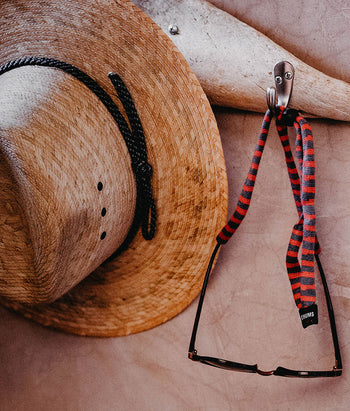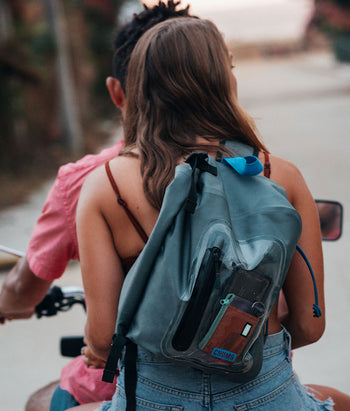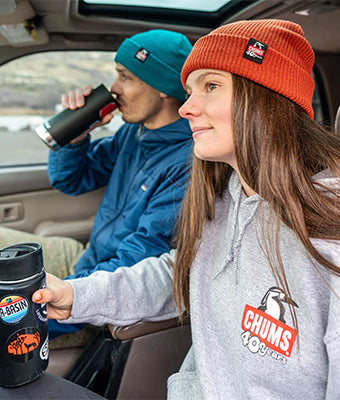Fishing Responsibly
Tips For Fishing Responsibly
Written by: Jean-Marie Bousquet
Life's just better lived in a pair of waders, and for me, there's no greater reward than doing so safely and sustainably every time I hit the water.
The past decade of my life has been spent fly fishing for trout. I was fortunate to be educated on the proper ethics of fishing early on in my angling journey, and catch-and-release practices quickly became second nature. I hope that by sharing some tips, whether you’re a conventional or fly angler, a newcomer, or an experienced pro, you’ll be sure to incorporate proper fishing techniques every time you hit the water. The best part is you don't need expensive equipment or a lifetime of knowledge to start now; with a bit of guidance and taking action, these techniques will undoubtedly become second nature for you too.
1. Awareness is Key
As extreme heat continues to sweep across the west along with drought, it's not uncommon to hear others talking about catch-and-release angling or water temperatures. Many of you might already be in the know (great!), but as fishing continues to grow, there will be more folks who need to hear this information. I hope you’ll help them get their feet wet the right way and share your knowledge of proper fishing techniques.
2. Know Before You Go
The age-old wilderness preparedness saying "know before you go" certainly applies to fishing as well. I typically have a plan in place before heading out of the day, along with a backup plan. I'm often traveling outside of my local waters to fish, so I make sure that I'm aware of specific regulations to any area I intend to wet a line. Regulations can include size limits for keeping fish, river closures, protected species, and trust pass laws. A quick google search with "your county fishing regulations" is an easy way to get in the know. You can also visit a fly shop in the area you intend on fishing for the most up-to-date information.
Along with regulations, it's essential to check the weather and river conditions before heading out. I'm a big fan of the Weather Underground App and River App, free to download and provide accurate data.
Lastly, I make sure my fishing license hasn't expired and that I have a paper copy or a digital version that is easy to access should I need to show it. Purchasing a fishing license goes directly to support conservation efforts, so why not buy one?
3. Catch-and-Release Techniques
First off, let's clear up what catch and release fishing means. When not keeping a fish, you immediately release fish unharmed back into the water where caught. By following these techniques, we are helping to support the survival of future fish populations one angler at a time.
Keep this checklist on your phone:
- Check water temps (if above 67 degrees, this temp is too stressful for trout), stop fishing.
- Use barbless hooks
- Bring the fish to the net as quickly as possible; try fishing with heavier leaders & tippet.
- Avoid contact with the bank or gravel as this removes protective slime
- Use a soft rubber net to protect the protective coating of the fish
- Keep the fish in the water & handle as little as possible with wet hands
- Do not squeeze the fish
- Remove the hook using forceps if necessary
- Release the fish by pointing its nose into the current so that water is flowing over its gills
- Kindly support the fish until it swims away.
4. Adjust Fishing Habits
While these techniques are essential for every fishing outing, it is vital to be extra mindful during certain times of the year, especially in summer when drought and extreme heat come into play. Temping the water often is crucial to know when to stop fishing for the day. To be safe, get a reading before fishing and on the hour until you leave. Remember that any temp above 67 degrees is too hot for trout.
Inherently as anglers, we are often the first ones to the river, and this should especially be true during times of heat. Montana developed Hoot Owl regulations that put closures on certain rivers between 2 pm and midnight. Not every state puts closures on rivers, but that doesn't mean you can't adopt your regulations and encourage friends to do the same. But what happens when it's still too hot? Now is an excellent time to find cold water, high country lakes, and creeks or target warm-water species, such as bass or carp that thrive in warmer conditions.
As if bettering the future of fishing wasn’t enough of a reward, I'd say practicing the following is pretty dang good fish karma too. The fish and fellow anglers thank you!
Jean's Picks for Summer Fishing
Life's just better lived in a pair of waders, and for me, there's no greater reward than doing so safely and sustainably every time I hit the water.
The past decade of my life has been spent fly fishing for trout. I was fortunate to be educated on the proper ethics of fishing early on in my angling journey, and catch-and-release practices quickly became second nature. I hope that by sharing some tips, whether you’re a conventional or fly angler, a newcomer, or an experienced pro, you’ll be sure to incorporate proper fishing techniques every time you hit the water. The best part is you don't need expensive equipment or a lifetime of knowledge to start now; with a bit of guidance and taking action, these techniques will undoubtedly become second nature for you too.
1. Awareness is Key
As extreme heat continues to sweep across the west along with drought, it's not uncommon to hear others talking about catch-and-release angling or water temperatures. Many of you might already be in the know (great!), but as fishing continues to grow, there will be more folks who need to hear this information. I hope you’ll help them get their feet wet the right way and share your knowledge of proper fishing techniques.
2. Know Before You Go
The age-old wilderness preparedness saying "know before you go" certainly applies to fishing as well. I typically have a plan in place before heading out of the day, along with a backup plan. I'm often traveling outside of my local waters to fish, so I make sure that I'm aware of specific regulations to any area I intend to wet a line. Regulations can include size limits for keeping fish, river closures, protected species, and trust pass laws. A quick google search with "your county fishing regulations" is an easy way to get in the know. You can also visit a fly shop in the area you intend on fishing for the most up-to-date information.
Along with regulations, it's essential to check the weather and river conditions before heading out. I'm a big fan of the Weather Underground App and River App, free to download and provide accurate data.
Lastly, I make sure my fishing license hasn't expired and that I have a paper copy or a digital version that is easy to access should I need to show it. Purchasing a fishing license goes directly to support conservation efforts, so why not buy one?
3. Catch-and-Release Techniques
First off, let's clear up what catch and release fishing means. When not keeping a fish, you immediately release fish unharmed back into the water where caught. By following these techniques, we are helping to support the survival of future fish populations one angler at a time.
Keep this checklist on your phone:
- Check water temps (if above 67 degrees, this temp is too stressful for trout), stop fishing.
- Use barbless hooks
- Bring the fish to the net as quickly as possible; try fishing with heavier leaders & tippet.
- Avoid contact with the bank or gravel as this removes protective slime
- Use a soft rubber net to protect the protective coating of the fish
- Keep the fish in the water & handle as little as possible with wet hands
- Do not squeeze the fish
- Remove the hook using forceps if necessary
- Release the fish by pointing its nose into the current so that water is flowing over its gills
- Kindly support the fish until it swims away.
4. Adjust Fishing Habits
While these techniques are essential for every fishing outing, it is vital to be extra mindful during certain times of the year, especially in summer when drought and extreme heat come into play. Temping the water often is crucial to know when to stop fishing for the day. To be safe, get a reading before fishing and on the hour until you leave. Remember that any temp above 67 degrees is too hot for trout.
Inherently as anglers, we are often the first ones to the river, and this should especially be true during times of heat. Montana developed Hoot Owl regulations that put closures on certain rivers between 2 pm and midnight. Not every state puts closures on rivers, but that doesn't mean you can't adopt your regulations and encourage friends to do the same. But what happens when it's still too hot? Now is an excellent time to find cold water, high country lakes, and creeks or target warm-water species, such as bass or carp that thrive in warmer conditions.
As if bettering the future of fishing wasn’t enough of a reward, I'd say practicing the following is pretty dang good fish karma too. The fish and fellow anglers thank you!
SUBSCRIBE TO OUR NEWSLETTER
Be in the know on the latest stories, special offers, and more.






